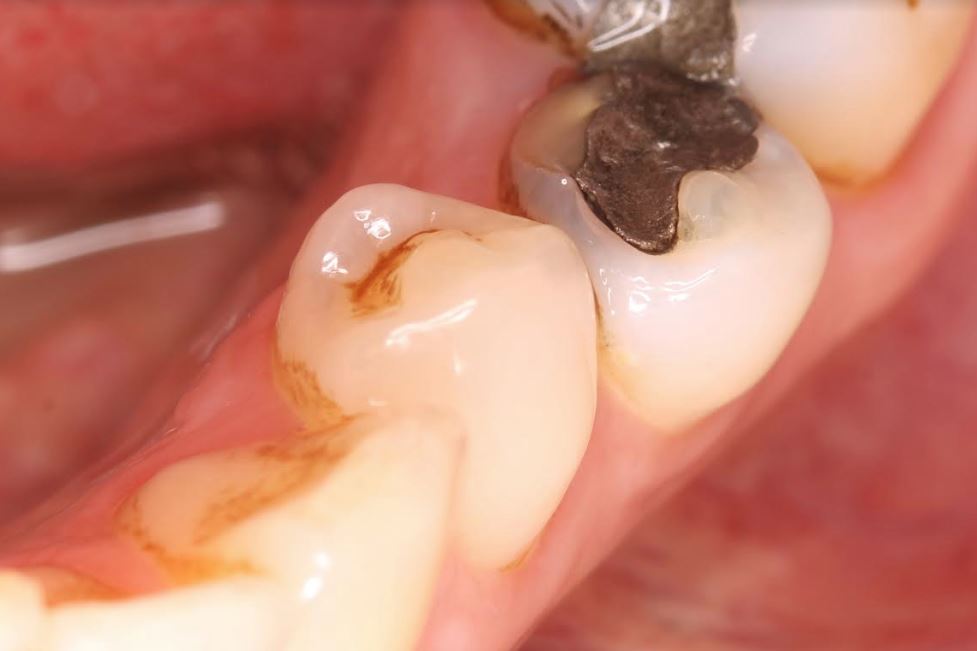The short answer is yes. Metal, amalgam fillings are safe even though they contain mercury. But that’s not much of an article so lets look into this in a little more detail.
The material, amalgam has been used as a filling material for over 150 years. It contains a mixture of metals. Silver, tin and copper along with a small amount of mercury that becomes solid as the material sets. It’s a strong and sturdy material that is easy to place and can last for years.
Amalgam is not very pretty; fillings have a silvery or dark appearance. But it is still a material that is used a lot in the UK.
But seriously, is it safe?
Mercury in its liquid form is really not good for you and should be avoided. However, in your filling, mercury is solid and stable. There is no evidence that it has an effect on the health of people with metal fillings.
Should I have my metal fillings removed?
You may think it would be a good idea to get rid of all of your metal fillings and remove the metal and mercury from your body. Whatever we argue about the impact on our health, we can all agree that amalgam fillings don’t look particularly nice. Your metal fillings can be removed but this must be done with caution. Let me explain why…
When your filling is in your tooth, the mercury is trapped. It’s stable. It’s not going anywhere. But when your dentist starts to drill into it, a mercury vapour is released into the air. Removing these fillings will actually release more mercury than if the filling was left alone. So when removing a metal filling, your dentist should take precautions to protect everyone from the mercury vapour as much as possible.
Why are regulations about amalgam fillings changing?
Regulations are set to change in July 2018. This is a European Union regulation that aims to decrease pollution. In particular, they want to decrease the amount of mercury from metal fillings going into our environment.

So from July 2018, it is recommended that an alternative material should be the first choice rather than amalgam for the following people;
• Children under 15 years old
• Pregnant women
• Women who are breastfeeding
This is not because of any evidence of health risk from amalgam fillings. This is an effort by the European Union to reduce pollution by phasing out metal fillings.
This is not a blanket ban on the use of metal fillings in these groups of people. It still may be necessary to use amalgam if it appears to be the best material for the job.
Dentists often follow the principal to keep dental treatment to a minimum during pregnancy anyway. As far as I know, there is no evidence to support this approach.
Remember, this new regulation is for environmental reasons rather than health reasons. There is no evidence that amalgam fillings have a negative effect on people’s health.
What happens when the UK leave the EU?
I’m not sure. Sorry.
What are the alternatives to metal fillings?
In small or medium sized cavities, a tooth coloured filling material may be appropriate. Tooth coloured materials have improved a huge amount in recent years. They are so much stronger and better looking than they have ever been. They can be a great alternative to a grey, metal filling.
In huge cavities, it may be appropriate to have a crown or filling made by a dental laboratory. A crown or lab made filling can help to cover and protect weak enamel that could fracture. We are trying to add strength to the tooth, keeping it useful for chewing.
Crowns can be made of gold or porcelain. Gold works very well. Porcelain is also very strong and is the tooth coloured option.
Summary
Metal fillings are a strong material that can still be very useful. Amalgam has been used for 150 years. There is no evidence that it is a risk to your health.
If you wish to have your metal fillings removed, this must be done very carefully. Drilling into a metal filling will release mercury vapour so your dentist should do this carefully.
There are alternatives such as tooth coloured fillings but amalgam can sometimes still be the most appropriate material.
This is certainly not a light bedtime read but if you’re interested… Here’s a literature review from the American Dental Association showing no negative health effects from amalgam fillings.
Keep updated with the Online Dentist newslettersign up today
Recent Articles
 Tooth brushing is the best way we have to remove bacteria from our mouths. The majority of problems with your teeth are caused by bacteria. Bacteria making holes. Bacteria damaging...
Tooth brushing is the best way we have to remove bacteria from our mouths. The majority of problems with your teeth are caused by bacteria. Bacteria making holes. Bacteria damaging...
 This article is all about toothpaste, what should be in it and why you should use it when brushing your teeth. Forgive me but I'm going to start out with...
This article is all about toothpaste, what should be in it and why you should use it when brushing your teeth. Forgive me but I'm going to start out with...








